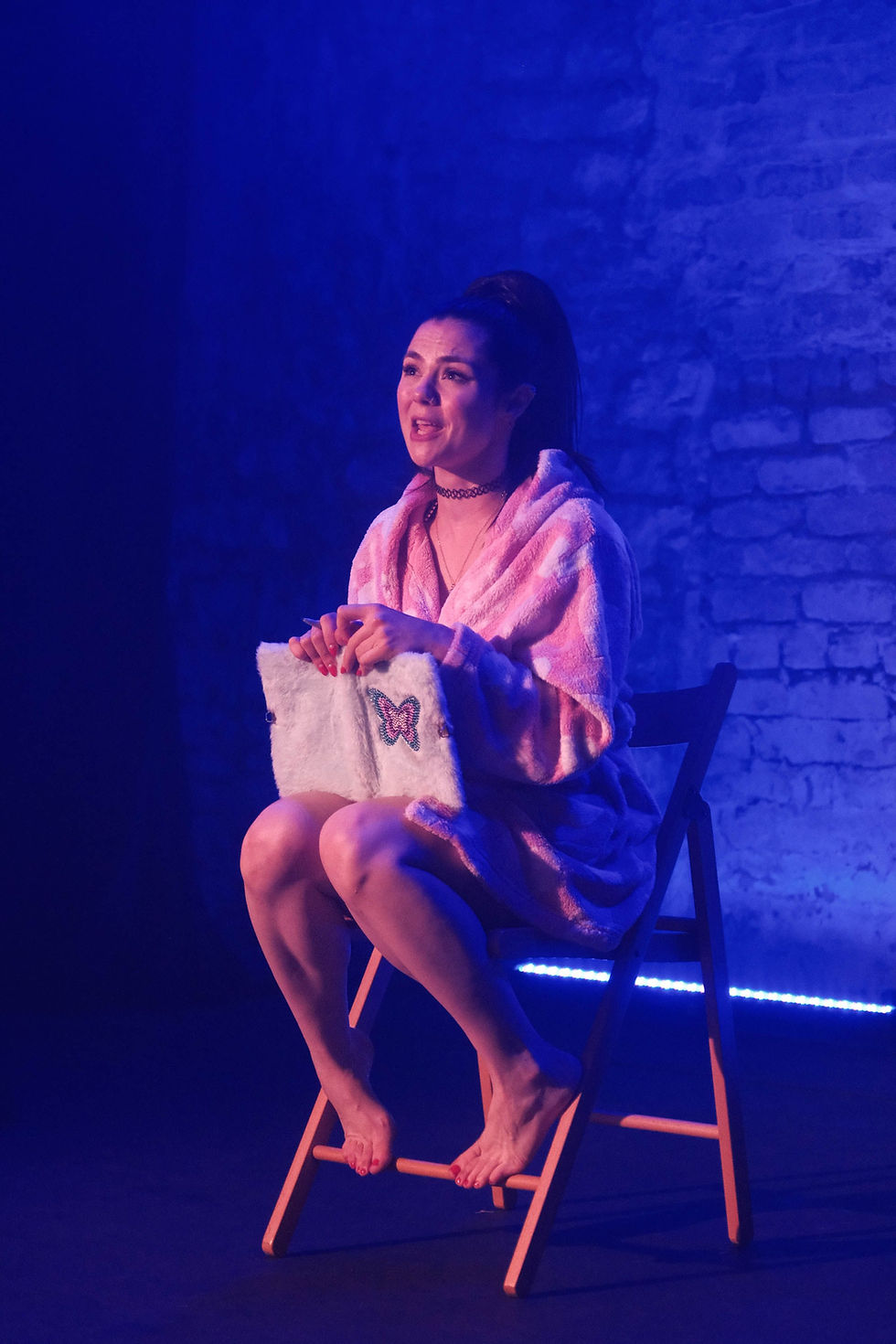Really Good Exposure
- Jack Stevens

- Sep 4
- 3 min read
Really Good Exposure is a show with ambition, flashes of creativity, and a strong central performance, but one that doesn’t always seem fully certain of its own identity. At its heart, the production feels like it’s reaching for something bigger—a piece that blends storytelling, design, and humour into a cohesive whole. There are moments where it edges towards that vision, offering glimpses of what it could become, and those moments are genuinely engaging. However, just as often, the work seems to take a step back or veer in another direction entirely, creating an experience that is intriguing but also uneven. It’s a piece full of potential, but also one that feels caught between ideas, not always sure of what story it most wants to tell or how best to tell it.

The direction (Fiona Kingwill) gave the impression of knowing roughly where it wanted to go, but not always how to get there. The overall shape of the piece came through, yet there were contradictions that pulled against it—choices that occasionally blurred, rather than sharpened, the focus of the storytelling. The result was a production that gestured towards cohesion without fully realising it.
The use of video design (Rachel Sampley) was one of the more puzzling aspects. At first, it appeared to serve as a supplement to the narrative, but over time it started to feel unnecessary and even distracting. The visuals didn’t always blend seamlessly with the rest of the design elements, leaving me wondering what function they were intended to serve. Rather than adding clarity, they drifted into the strange and somewhat disjointed, which undermined the otherwise grounded work on stage.
By contrast, the lighting (also Rachel Sampley) was more successful. General washes helped frame the performance with clarity, and there were some standout moments that elevated the atmosphere. The chase effects used during the fireworks sequence—bars at the bottom flickering with energy—were a clever touch, even if the timing wasn’t always fully in sync with the audio. These effects demonstrated creativity and attention to detail. Overall, the lighting did a reliable job of supporting the production, though it stopped short of being truly memorable.

Sound design (Hattie North) proved a bit of a rollercoaster. At its best, it was dynamic, impactful, and used to brilliant effect in shaping atmosphere. However, there were moments when the balance tipped the wrong way: music that lingered too long and distracted from the dialogue, sections that became overly loud, and one instance where the music was so faint it was barely audible. These inconsistencies made for a slightly uneven experience, though on the whole, the soundscape contributed effectively to the performance.
The book (Megan Prescott) felt the most underdeveloped element. It contained promising ideas and intriguing threads but also contradictory passages that didn’t always make sense. Some sections seemed disconnected from the rest of the piece, like puzzle pieces that didn’t quite fit. The potential is clear, but the material could benefit from a stronger throughline to tie stories together and establish a firmer sense of purpose. At present, it sits in an in-between space: interesting, but uncertain of what it ultimately wants to be.
Where the production shines brightest is in its performance. Megan brings charisma, energy, and a clear connection with the audience. Even when the writing faltered, she had the confidence and stage presence to keep the momentum alive. Most of the jokes landed, and her delivery made the humour feel immediate and accessible. It’s no exaggeration to say that Megan’s performance anchored the piece—her consistency and charm gave the audience a point of stability amid the show’s more uneven elements.

Overall, Really Good Exposure is a production with a lot of potential and some genuinely creative flourishes. Its design elements range from solid (lighting) to distracting (video), while the sound and book struggle with consistency. But with Megan at the helm, it never loses its ability to engage the audience. With refinement—particularly in tightening the writing and streamlining certain choices—this is a show that could move from “interesting but uneven” to something far more impactful. Please just be aware of the trigger warnings including the one for nudity.



Comments